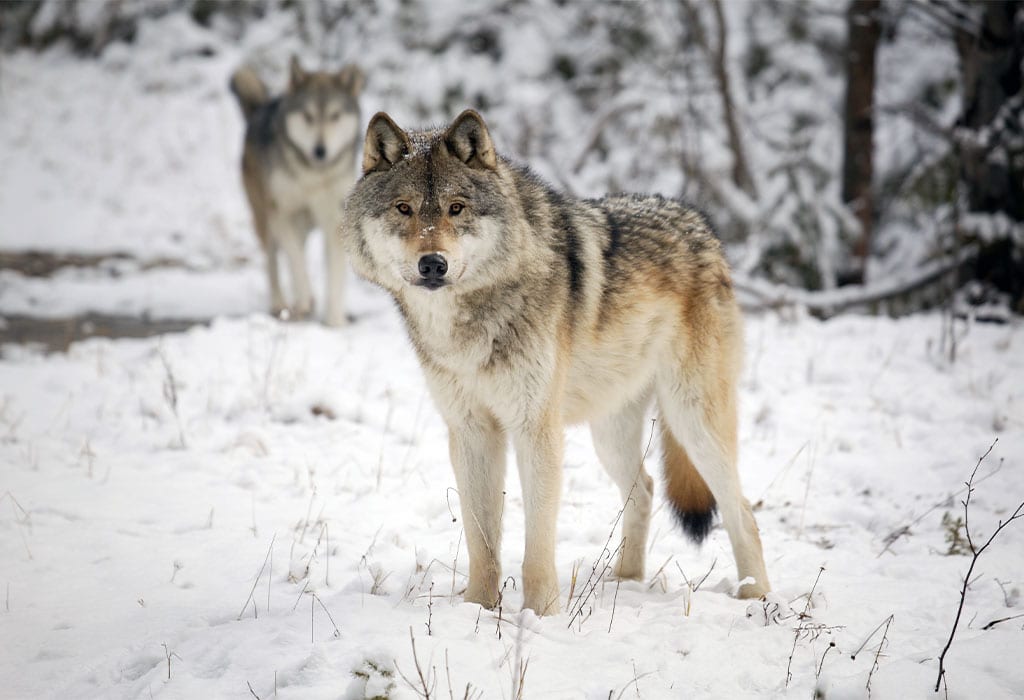Picture the Serengeti—not in Africa, but here in the American West. Instead of marveling at lions and cheetahs, giraffes and antelope, visitors swoon at the sight of the majestic gray wolf, the bison, and the pronghorn. It’s an awesome spectacle, a pilgrimage spot for legions of wildlife watchers, and a true national treasure.
Far from being a fantasy, the “American Serengeti” was, in fact, alive and well on the Great Plains during the 1800s. But rather than protecting and revering their wildlife, Americans shot, trapped, and poisoned them. By 1950, every last Great Plains gray wolf was gone, victims of an eradication campaign perpetrated by the federal government and the livestock industry.
In 1978, gray wolves were rescued from the brink of extinction and listed under the Endangered Species Act, after which point reintroductions and recolonizations resulted in their slow return to parts of their historic habitat. But 40 years of slow, incremental wolf recovery could soon be extinguished in one fell swoop. The U.S. Fish and Wildlife Service is proposing to remove gray wolves’ Endangered Species Act protections, and if it succeeds, we face a staggering loss to wolves, to the ecosystems that depend on them—and to our national heritage.
The Consequences of Delisting
On March 15, 2019, the U.S. Fish and Wildlife Service (FWS) issued a proposal to “delist,” or strip Endangered Species Act (ESA) protections from, gray wolves in the lower 48 states. It’s not the first time FWS has proposed delisting the gray wolf: this proposal marks the fifth time FWS has tried to remove wolves’ Endangered Species Act protections since 2003.
FWS argues that wolves are “recovered” because they have returned to an estimated 10 percent of their historic range. Scientists and wolf advocates disagree—10 percent is a minuscule number nowhere near true “recovery,” which would entail wolves’ return to as much of their historic range as possible, including states like Colorado and Utah where they once roamed but are now absent.
Despite FWS’s efforts, wolves have thus far retained their ESA protections except in the states of Idaho, Montana, and Wyoming, where they are no longer protected. And if what’s happening in those three states is any indication, national delisting wouldn’t just be bad news for the lower 48’s wolves—it would be a death sentence.
To put it bluntly, when wolves lose their ESA protections, mass slaughter isn’t far behind. In Idaho, Montana, and Wyoming, trophy hunters, trappers, and others have massacred more than 3,200 wolves since 2011.
“We’ve already seen that the states tend to manage for the minimum number of wolves they can get away with,” said Guardians’ Endangered Species Advocate, Taylor Jones. “They hunt and trap them pretty indiscriminately, particularly in Wyoming.”
“That’s probably what would happen in other states” if wolves were delisted in the lower 48, she said.
The loss of wolves is an unmitigated catastrophe for the many ecosystems dependent on these apex predators to keep them healthy.
“Wolves’ ecological role is to keep prey populations like elk and deer on the move and keep them from overgrazing and over-browsing riparian areas,” Jones explained. “That creates habitat for songbirds, trout, and beavers. There’s a whole trophic cascade that restores a healthy ecosystem.”
Remove wolves and the elk and deer run rampant, destroying streambeds and destabilizing the ecosystem. Yellowstone National Park famously suffered this fate after its last wild wolf was exterminated in 1926; as soon as wolves were reintroduced to the park, the ecosystem began to recover.
What’s Next for Wolves?
FWS’s proposal to delist gray wolves kick-started a 60-day public comment period, which the Service later extended until July 15, 2019. After that, the agency will make its final decision.
Guardians has been dogging FWS every step of the process, encouraging supporters to comment on the proposal; submitting substantive comments of our own with the aid of a wolf expert and the Western Environmental Law Center; and pushing for citizens’ hearings in Denver. If FWS does decide to delist gray wolves despite public outcry, we’ll see them in court.
We’re deeply grateful to all those who commented, showed up, and spoke out in support of America’s gray wolves during these last few months. Rest assured, we won’t stop fighting until the howl of the gray wolf echoes from the plains of Canada to the deserts of Mexico and throughout the American Serengeti once more. These indomitable icons of wildness deserve nothing less.
